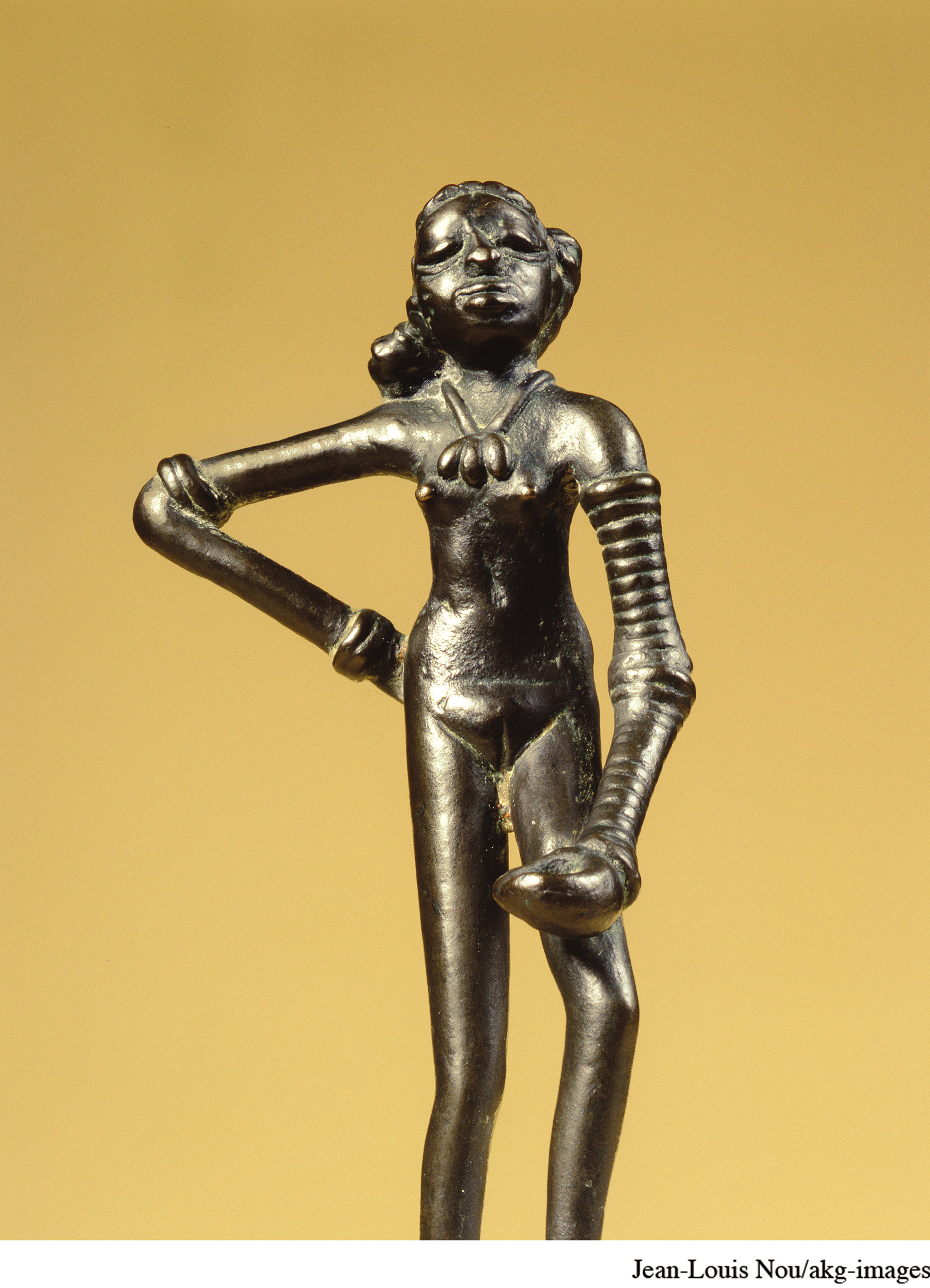Ways of the World with Sources
Printed Page 94
Source 2.3
Dancing Girl
Limited archeological evidence suggests that some urban women played important social and religious roles in the Indus Valley civilization. Figurines of women or goddesses are more common than those of men. Women, apparently, were buried near their mothers and grandmothers, while men were not interred with their male relatives. The great variety of clothing, hairstyles, and decorations displayed on female figurines indicates considerable class, ethnic, and perhaps individual variation.
Among the most delightful discoveries in the Indus Valley cities is the evocative statue shown in Source 2.3. It is about four inches tall and dates to around 2500 B.C.E. This young female nude is known generally as the “dancing girl.” Cast in bronze using a sophisticated “lost wax” method, this statue provides evidence for a well-

- What features of this statue may have provoked such observations?
- How do you react to this statue? What qualities does the figure evoke?
- What does Source 2.3 suggest about views of women, images of female beauty, and attitudes about sexuality and the body?